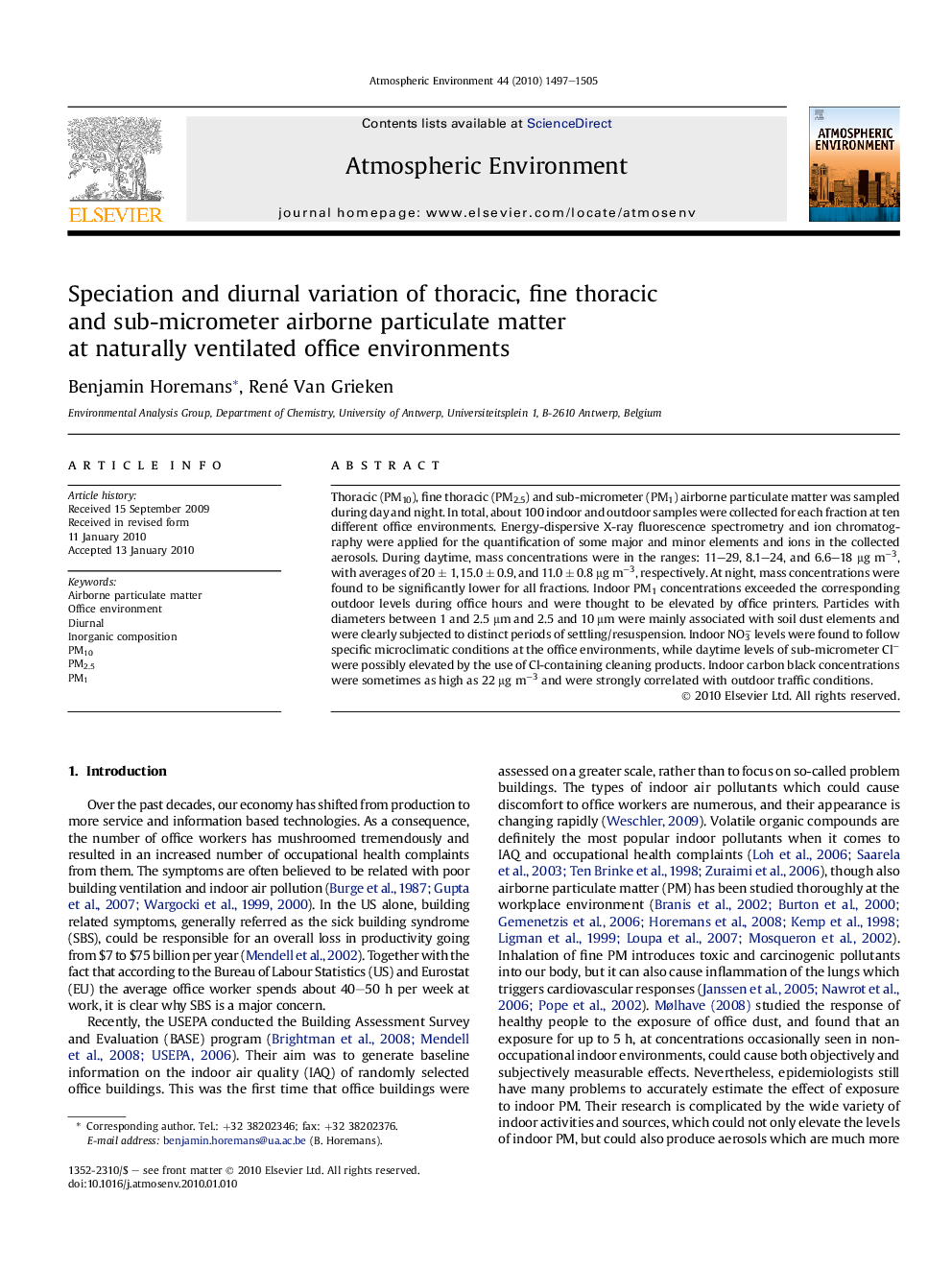| Article ID | Journal | Published Year | Pages | File Type |
|---|---|---|---|---|
| 4441147 | Atmospheric Environment | 2010 | 9 Pages |
Thoracic (PM10), fine thoracic (PM2.5) and sub-micrometer (PM1) airborne particulate matter was sampled during day and night. In total, about 100 indoor and outdoor samples were collected for each fraction at ten different office environments. Energy-dispersive X-ray fluorescence spectrometry and ion chromatography were applied for the quantification of some major and minor elements and ions in the collected aerosols. During daytime, mass concentrations were in the ranges: 11–29, 8.1–24, and 6.6–18 μg m−3, with averages of 20 ± 1, 15.0 ± 0.9, and 11.0 ± 0.8 μg m−3, respectively. At night, mass concentrations were found to be significantly lower for all fractions. Indoor PM1 concentrations exceeded the corresponding outdoor levels during office hours and were thought to be elevated by office printers. Particles with diameters between 1 and 2.5 μm and 2.5 and 10 μm were mainly associated with soil dust elements and were clearly subjected to distinct periods of settling/resuspension. Indoor NO3− levels were found to follow specific microclimatic conditions at the office environments, while daytime levels of sub-micrometer Cl− were possibly elevated by the use of Cl-containing cleaning products. Indoor carbon black concentrations were sometimes as high as 22 μg m−3 and were strongly correlated with outdoor traffic conditions.
